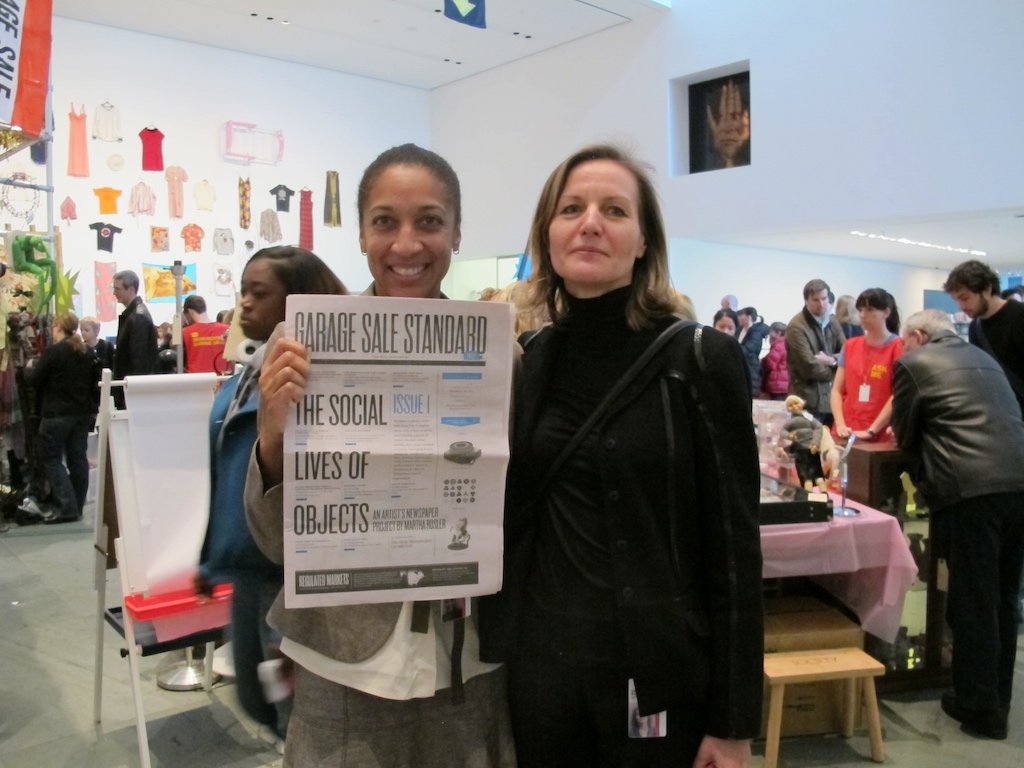When I was a teenager in North Carolina, I would wake up early on Saturdays to go to garage sales with my parents. My father, who grew up in North Africa and learned to haggle very young, would make coffee while my mother, the daughter of an American traveling salesman, meticulously read through the classified section of the newspaper listing all the garage sales in the Greensboro/High Point/Winston-Salem area. We had an enormous, fold-out, street-by-street map of Guilford County and a color-coded highlighter system with which to plot an itinerary for the hours we would spend looking for The (illusive) Garage Sale Find.
Over years of such mornings, my mother developed an analytical method for determining which neighborhoods had the best sales, those with good books, thick cotton dress shirts, and bizarre knickknacks. The Finds were often not in the richest neighborhoods, but in the aspirational middle class ones, places where a more affluent generation was tasked with sorting through their parents’ belongings after a death or a move into a retirement home. Neighborhoods where people had lived when they were young and newly married, where they bought property after they joined the law firm but before they made partner, neighborhoods that were respectable but modest.
If we showed up early, people still believed in the value of their stuff. Especially at the sales of those less used to any challenge to their ideation of value, hosts were insulted by my mother’s laconic explanation that DVDs just aren’t worth more than $1 at a garage sale. If we got to a sale late in the morning, even the most self-assured banker-by-day had been deflated by hours of people scoffing at his suggestion that a vacuum used only twice was still almost as valuable as it had been the store. Time eroded confidence, but so did repeated confrontation with whoever had read the block-printed announcement in the newspaper and showed up to argue with them about the value of their possessions.
Beyond the aesthetic chaos produced in the house we lived in, the ritual also instilled in me a deep appreciation for the psychological construction of value. I absorbed my father’s quiet Mediterranean skepticism in the face of blustering North Carolina Republican assurance that this lawn-mower or that radio was top-of-line, no-question, worth-every-penny. I listened to my mother’s Southern accent thicken with an older woman selling handmade lace and then vanish when trying to buy a box set of Kierkegaard’s complete works. Each sale required a lightning-fast strategic assessment of class, of a seller’s generation, and of their prejudices. The garage sale, I learned early, is regulated by conflict between complex and highly contextual fantasies of value that are also deeply subjective.
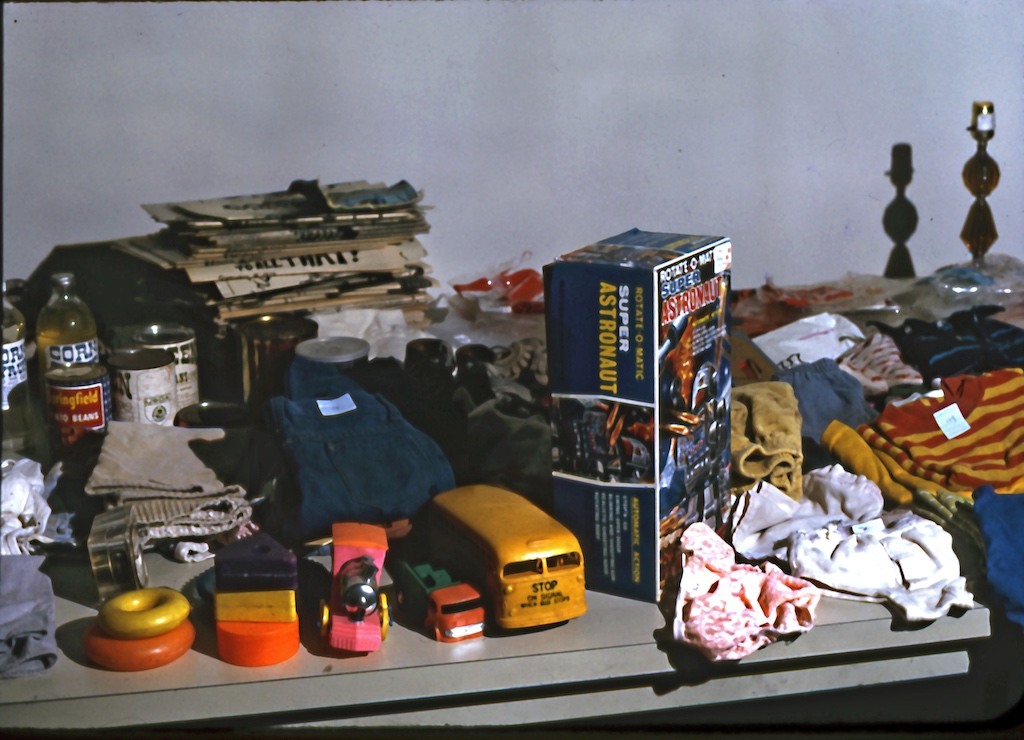
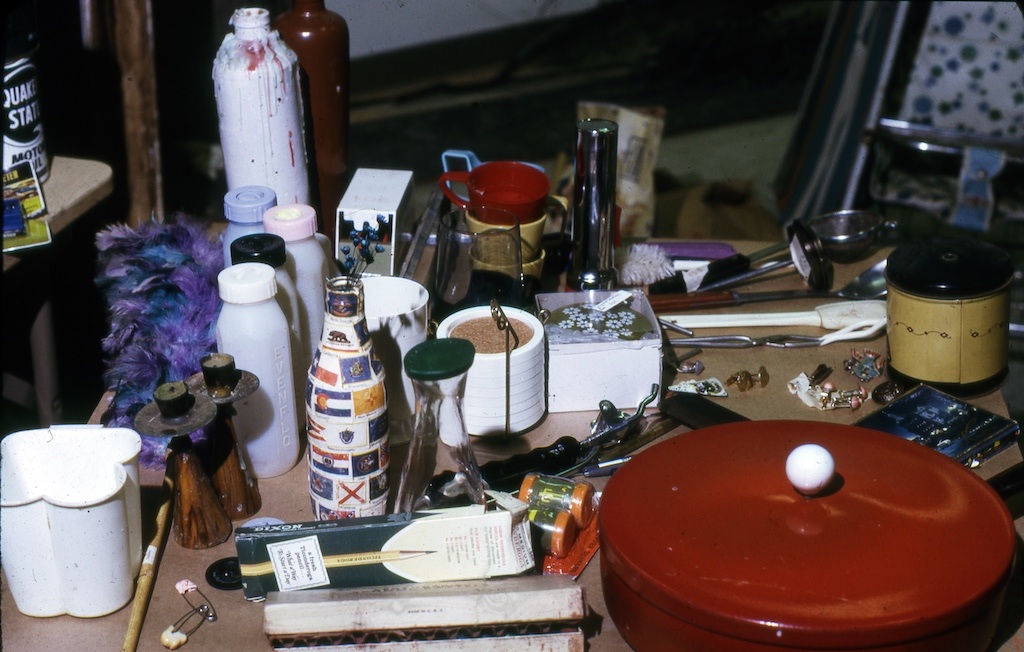
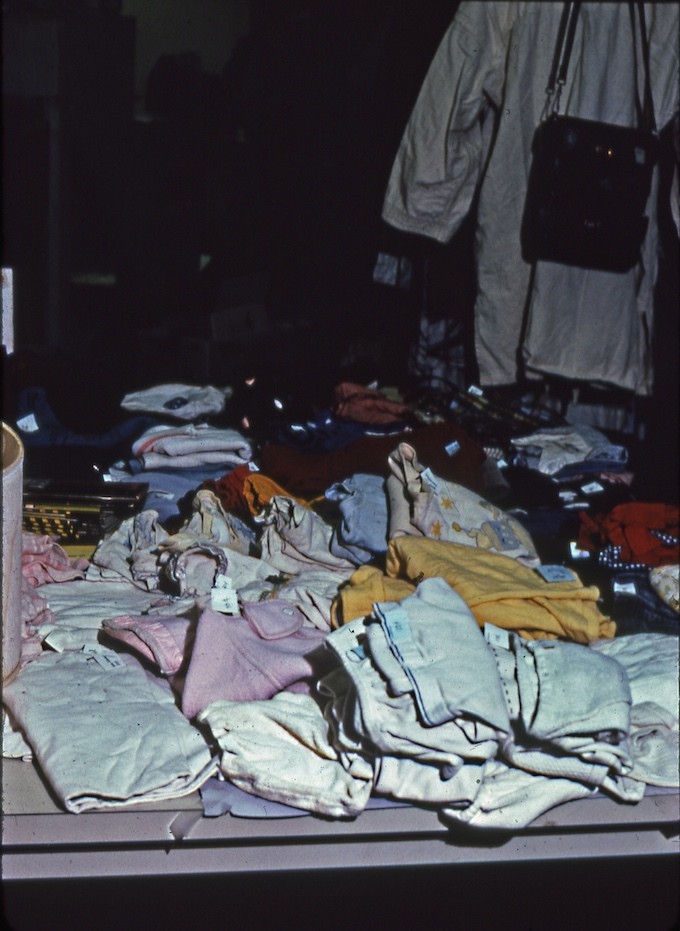

Propping Open the Social
In the fall of 2011, Martha Rosler hired me as a studio assistant dedicated to a large-scale re-staging of her installation and performance project, Martha Rosler's Garage Sale. 1
- The first installation of Martha Rosler s Monumental Garage Sale was in the University Art Gallery at the University of California, San Diego in 1973. It included "(c)lothes, shoes, books, records, toys, costume jewelry, tools, personal letters, art works, and other mementos, as well as soft-core pornographic magazines and empty food containers," which were "displayed on racks and tables for visitors to browse or to buy…" (Quoted in the Garage Sale Standard, page 2. Available online at: https://www.moma.org/interactives/exhibitions/ 2012/garagesale/garagesale1.pdf) Rosler advertised the sale as an artwork and as a "normal" sale in the classified section of the newspaper, which was important to Rosler because the conflation of "real" and "artistic" events implicated "art visitors" in an informal economy. The Monumental Garage Sale traveled next to the garage of La Mamelle gallery in SF in 1977, where it was called Traveling Garage Sale. A short video of that one played at subsequent sales at: the Generali Foundation, Vienna (1999); the Museu d Art Contemporani, Barcelona (1999); Moderna Museet, Stockholm (2004); and The Institute of Contemporary Arts, London (2005). Each iteration of the Garage Sale became a means to collect objects to sell, but also to accumulate things from disparate contexts as the material basis for staging the Sale.
- The Meta-Monumental Garage Sale had some objects from the original sale, like all the iterations of the project, but many of the objects in this iteration were sourced from public donation events at MoMA, at PS1, at the Triple Canopy / Light Industry space in Greenpoint, and through private donations by family and friends of the artist and by museum staff.
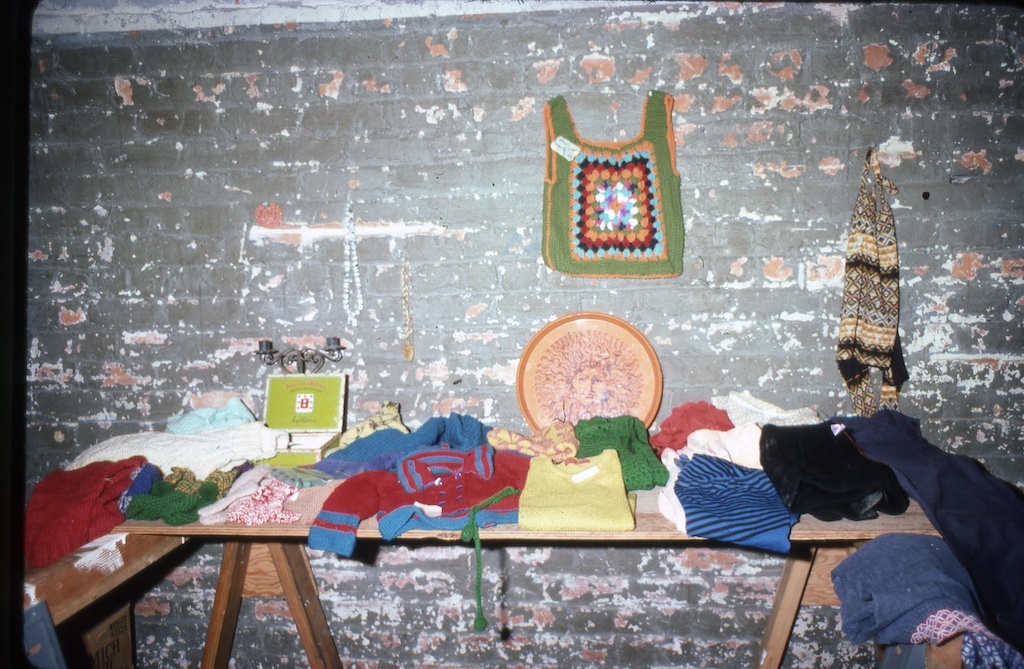
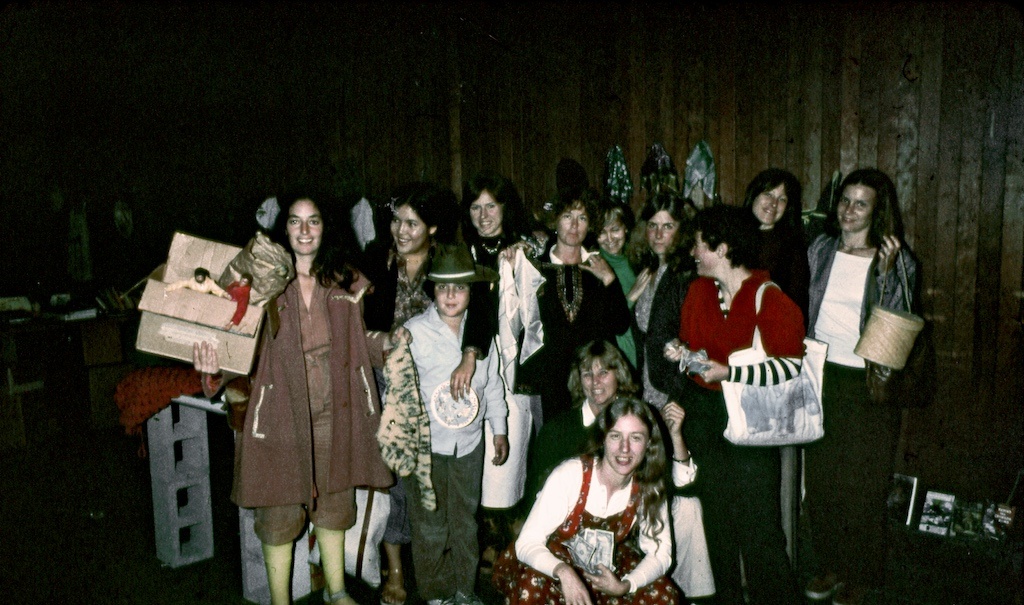
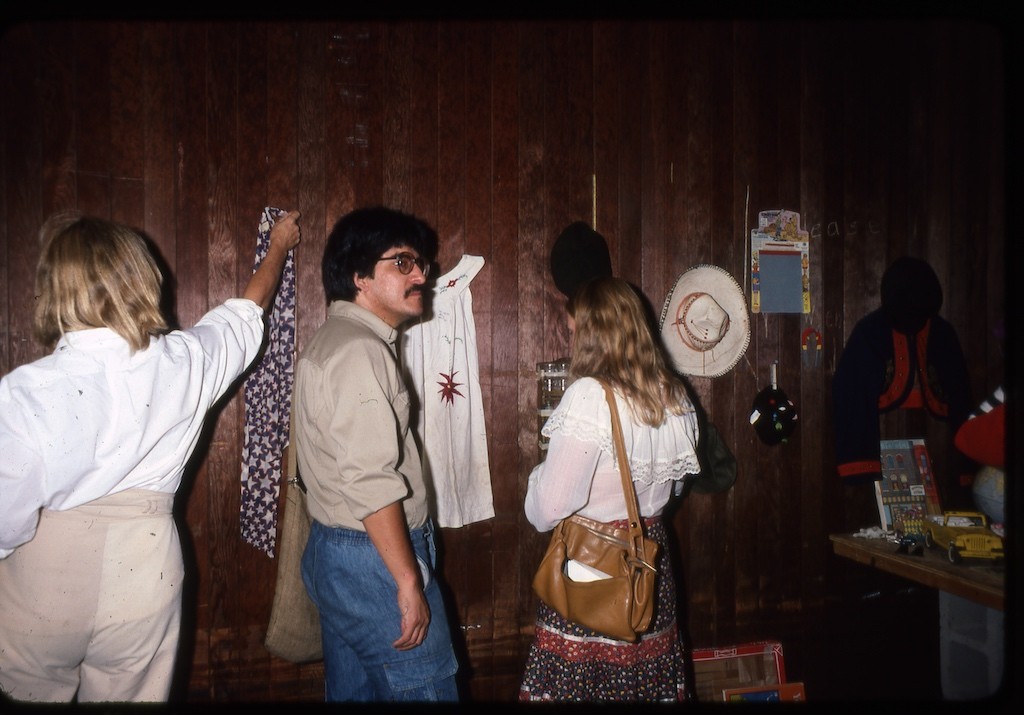
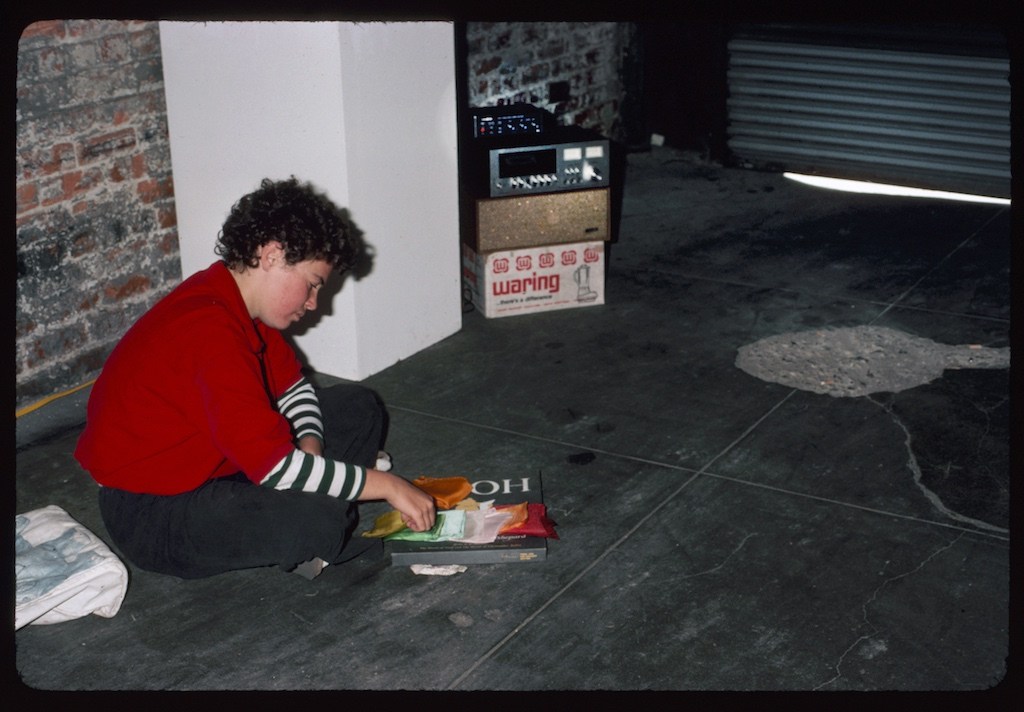
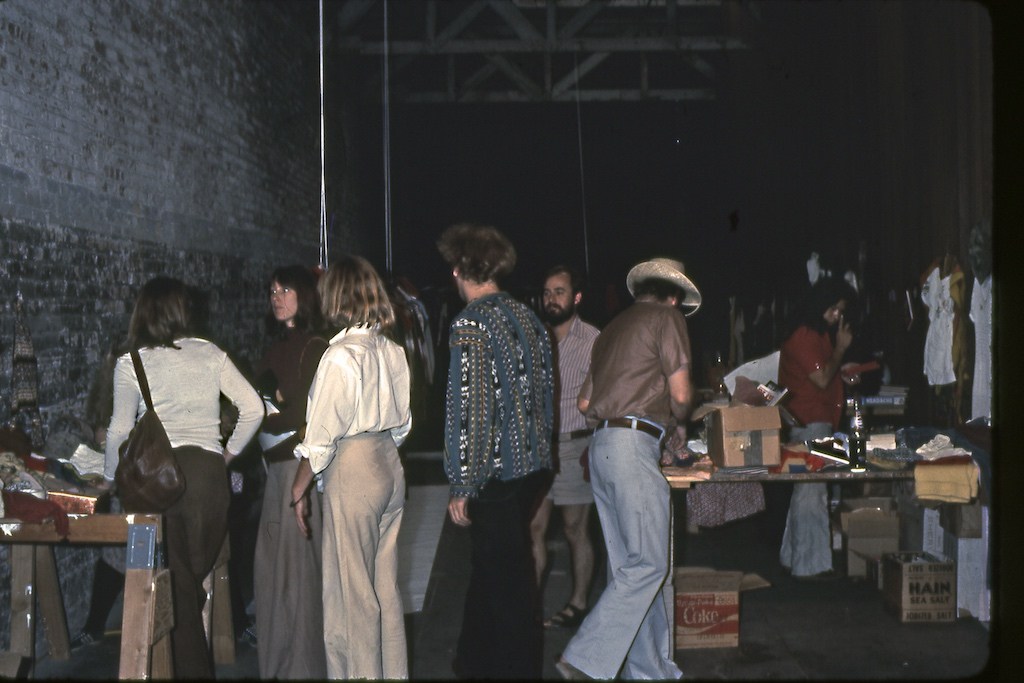
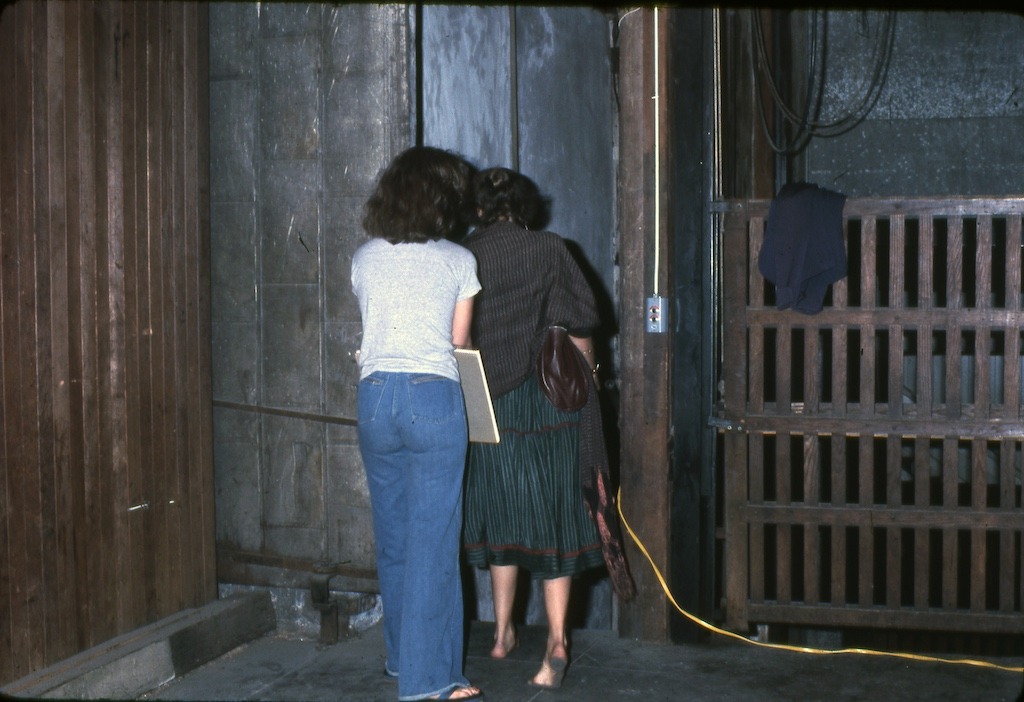
Rosler was relentless about the material aspect of the work because the objects for sale both reified and provoked an affective experience, in herself or in the viewer. Asked by New York magazine in 2012 if she had ever sold something that made her squeamish, she replied: "I sold used diaphragms at the one in 1977. I have a picture of a woman holding them up. I think she was an artist, but I'm not sure. I'm sure you've been to garage sales and I'm sure you have said to yourself, They are trying to sell that?" 3
- Rachel Wolff, "The Other Museum Shop," New York (August 19, 2012). See http://nymag.com/guides/fallpreview/ 2012/martha-rosler-2012-8/
- Ibid.
At a sale in 1973, I was sad to see that people were selling their dead father’s slide collection—images of trips to foreign lands, monuments, flowers, family celebrations. So I bought it. I’ve shown them in every garage sale since. I just thought, Wow, you spend your life accumulating these images and your kids chuck them out.
- Ibid.
- Introductory text, The Garage Sale Standard, page 2. See https://www.moma.org/interactives/ exhibitions/2012/garagesale/garagesale1.pdf
- Jillian Steinhauer, "A Tag Sale at the Temple of Modernism," Hyperallergic (November 22, 2012). See https://hyperallergic.com/60735/a-tag-sale-at-the-temple-of-modernism/
There is an intimate relationship between the aspect of the Meta-Monumental Garage Sale that was social, the face-to-face-ness of the economic transaction, and the aspect that was material. One way to think about this interdependence is through Shannon Jackson's writing on social practice artwork as a genre that analyzes and renders the structures that support the social world. Jackson is coming from theater studies, which understands the object onstage as one that "needs a gesture," or needs an "embodied action over time" in order to make meaning. 8
- Shannon Jackson, Social Works: Performing Art, Supporting Publics (New York: Routledge, 2011), 80.
The prop’s resonance comes from its easy withdrawal, its shelving, its losing—despite its vital importance for the constitution of selves and worlds. It is an object in a system that is at once material and psychic, pragmatic and semiotic. The vitality of the prop comes in the precarious realization that the object you hold is also one that holds you.
- Ibid.
To me “meta” represented the fact that this was to be the last garage sale. The first one was called “monumental,” and of course it really wasn’t—it was just a garage sale. But it was full of stuff. This time I decided I was going to play up the semiotic element: “It’s not mega-monumental, it’s meta-monumental,” so you need to read it not only for what it contains but how it contains it and where it is, and also you need to consider the question of what sort of social form it is. This MoMA garage sale was a kind of capstone for the totality of the garage sales, an effort to highlight this project as a series of unexpectedly complex utterances about social interactions in two dimensions: one is the position of women and things in the domestic economy, and the other is the assignment of value to objects based on the universe of discourse in which they circulate.
- Interview with the author, December 13th, 2017. Greenpoint, Brooklyn, New York.
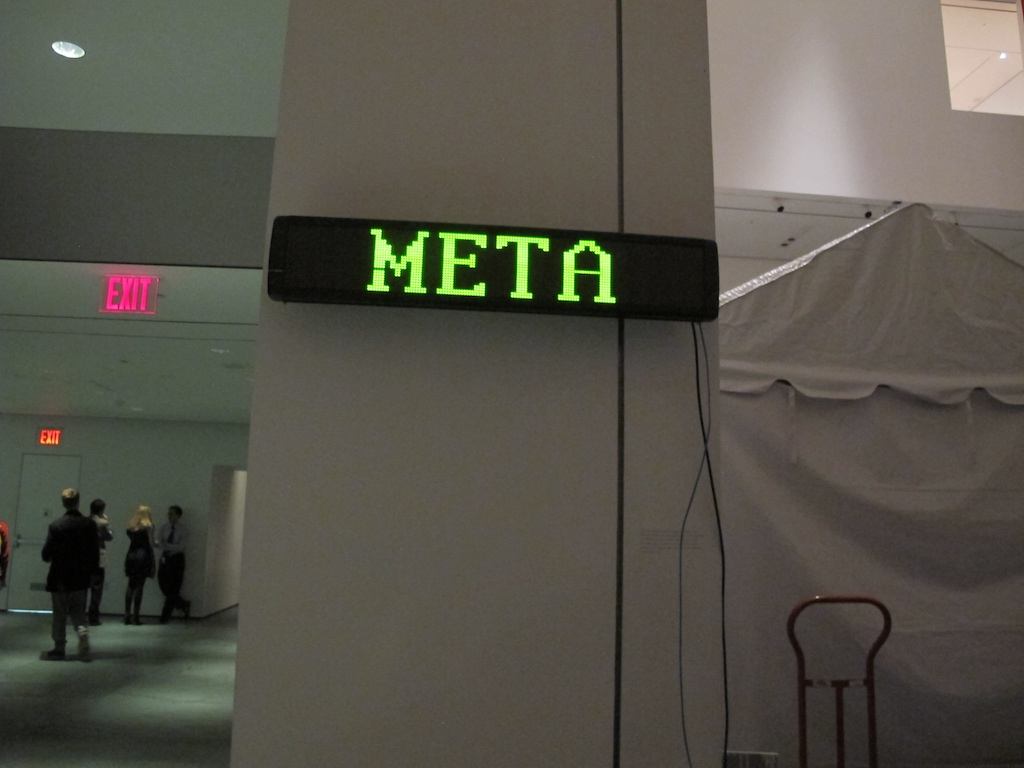
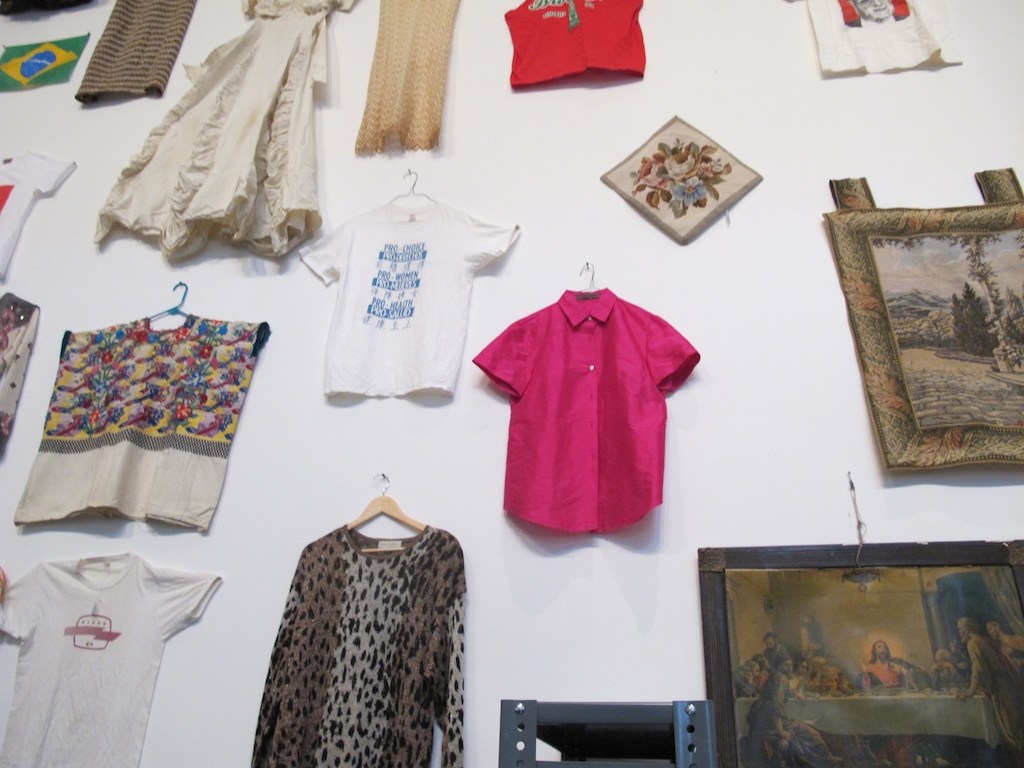
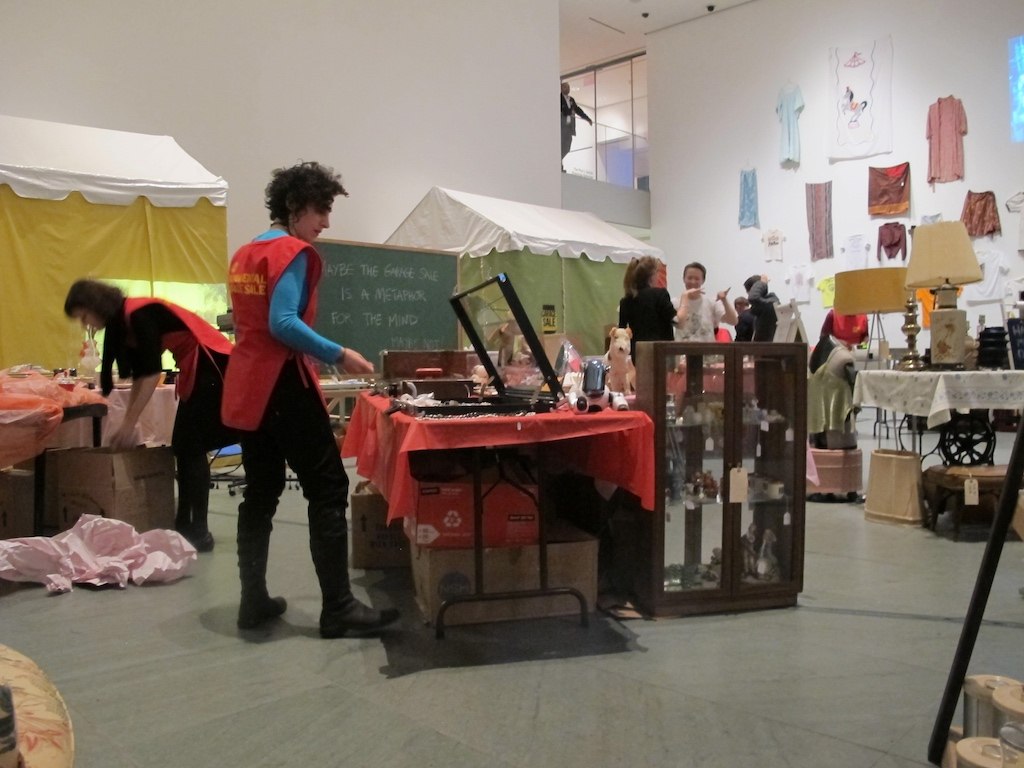


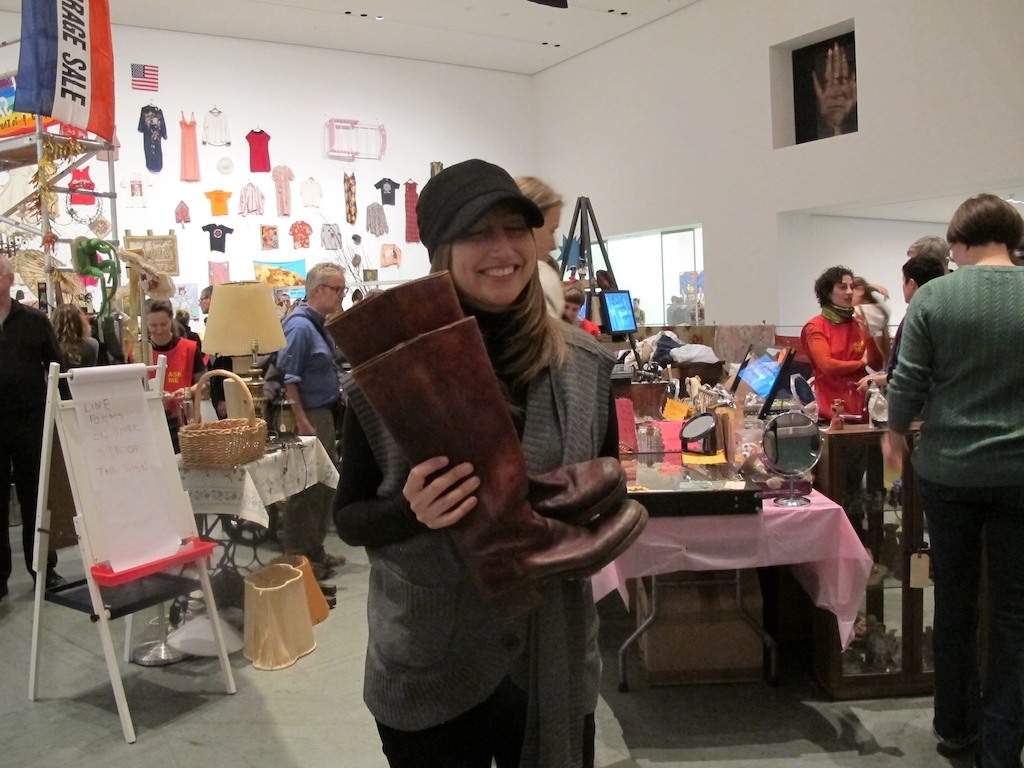
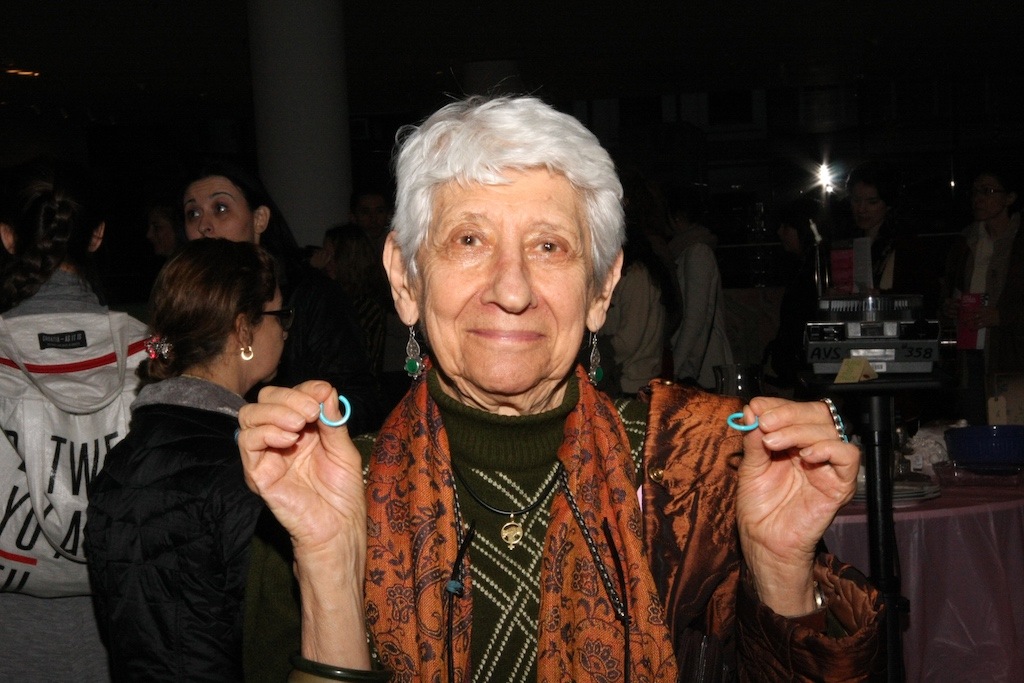

Desire and Anxiety
On their website, MoMA describes the project as "a large-scale version of the classic American garage sale, in which Museum visitors can browse and buy second-hand goods organized, displayed, and sold by the artist." 11
- THE TEXT
The tape consisted of a meditation spoken by the garage sale persona. Her musings express contradictory positions about things relating to the sale: exchange value versus use-value of material goods, social relations and their partial obfuscation by commodity relations, the origins of commodity fetishism, the conflicting emotions of desire and shame evoked by the prospect of selling one’s cast-aways to friends and strangers … the fear of being judged on the evidence of one’s “things.” She asks questions about the social forms and social relations ranging from the trivial to the transcendent. She speaks one moment with the voice of an entrepreneur, at the next with that of the wage earner trying to supplement wages of ever-decreasing buying power; she reproduces fragments of the ideologies of positions within different social classes.
- Karen Moss, "Martha Rosler s Photomontages and Garage Sales: Private and Public, Discursive and Dialogical," Feminist Studies, Vol. 39, No. 3 (2013): 694.
- Wolff, "The Other Museum Shop."
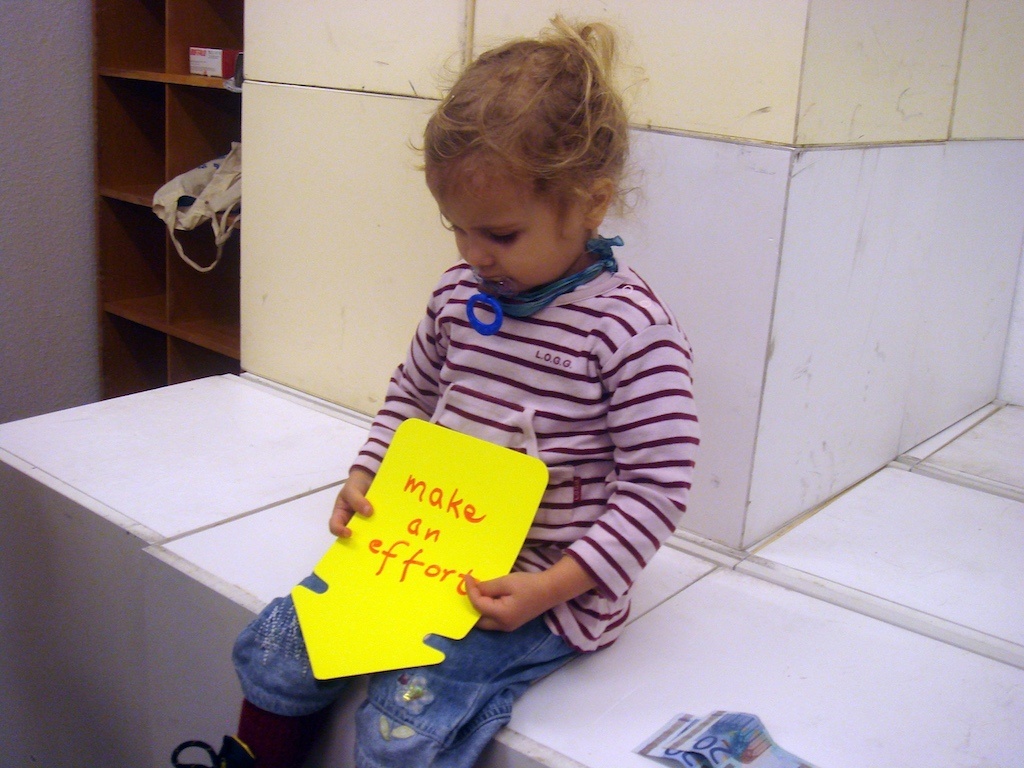
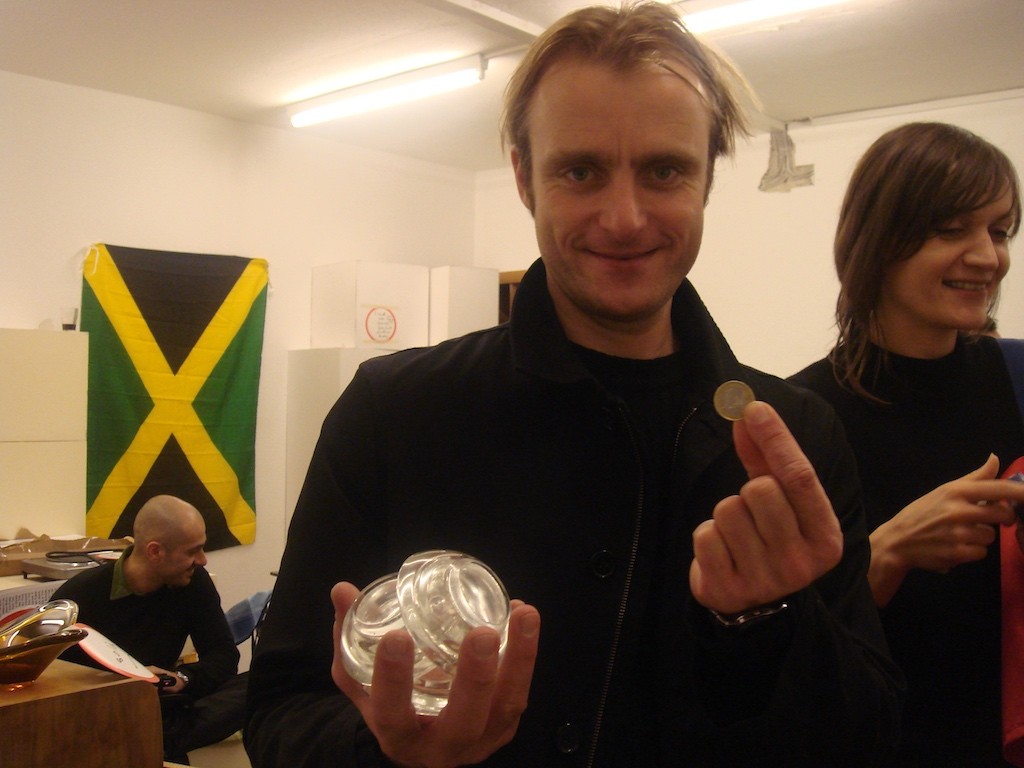
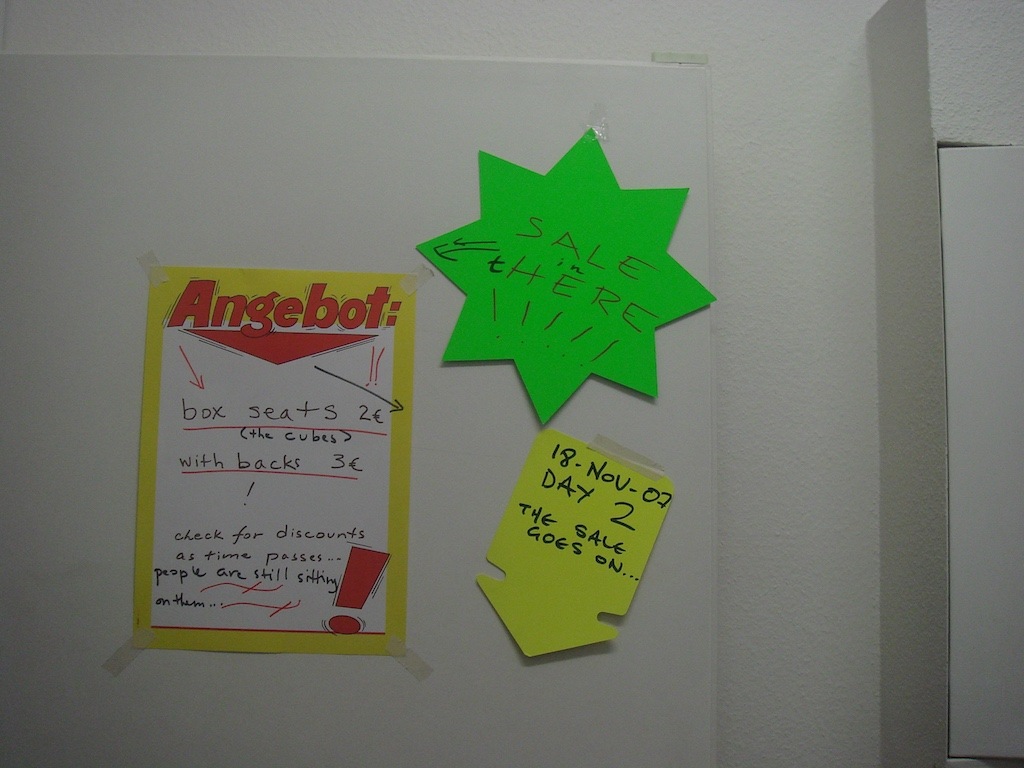
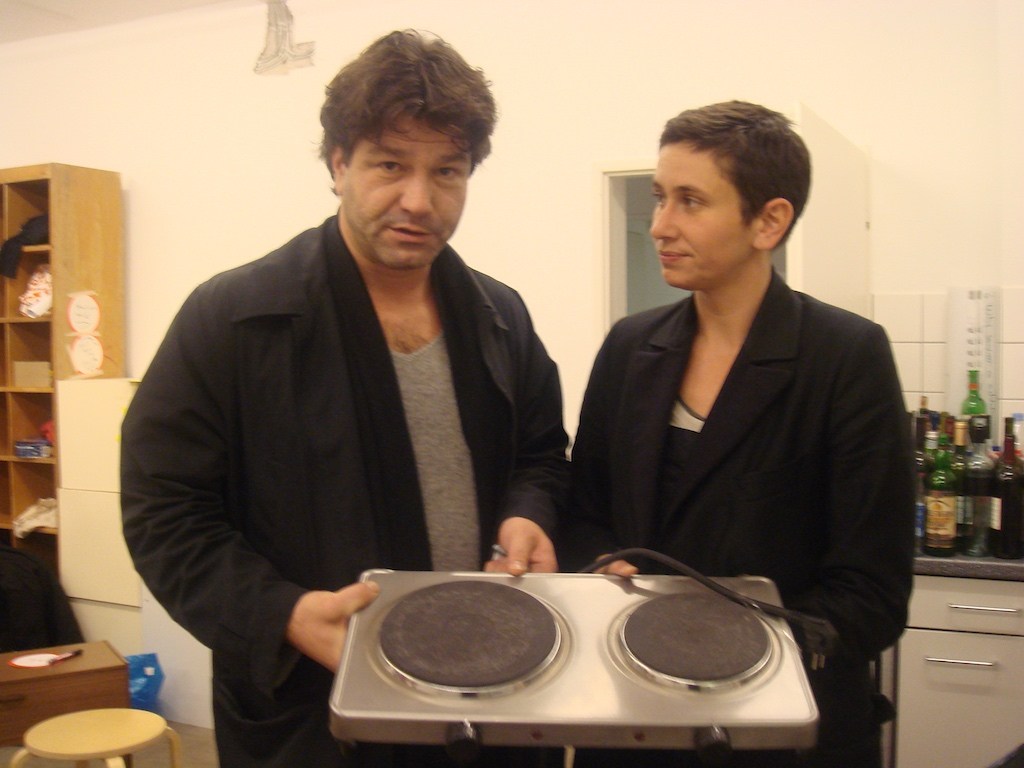
The official press release for the MoMA show described what the institution had hoped the effect of an installation that filled "MoMA's Marron Atrium with strange and everyday objects donated by the artist, MoMA staff, and the general public," would be-namely, to produce "a lively space for exchange between Rosler and her customers as they haggle over prices." 14
In fact, Rosler hired a fleet of professional actors, artists, and arts writers to act as her avatars in the project. Most people interacted with one of these people, who were trained by Rosler in techniques to embody her philosophy of capricious pricing. Even Rosler's gallerists participated, though of course they weren't paid. 15- http://nymag.com/guides/fallpreview/ 2012/martha-rosler-2012-8/ and comments to the author, January 13th 2018.
The Meta-Monumental Garage Sale was largely read through the interactive aspect of the project, and it was judged on the work's ability (and more often its failure) to produce a significant encounter between Rosler, her avatars, and the general public. 16
- In response to this text, Rosler pointed out to the author that the cross-section of visitors who attended the sale and wrote critically about it either in the art critical press or on blogs is very small in comparison to the number of cheerful, satisfied visitors. This fact was evidenced in part by the photographs taken at the Sale of happy new owners and their objects by a professional wedding photographer, which were posted to a blog throughout the run of the performance. Rosler also rightly pointed out that the Sale was quite successful financially. Comments to the author, January 13th, 2018. Part of this text s argument is that the established channels of art criticism really failed the Sale, in the sense that few took the project seriously as a semiotic object. I, the author, unflinchingly attribute this failure to structural sexism.
I was living on the Lower East side in 75 with Sekula after we graduated and before we went back to California, and my mother came to visit, and she decided to buy us some groceries. We were walking on 2nd Avenue, and she stops off at the fish store and she says to the guy, “Come on, what are you going to charge me to take this fish to Brooklyn?” Which, you know, as a gambit makes no sense at all, and she wasn’t going to take the fish to Brooklyn, either. But, it’s a gambit. It’s designed to throw the guy off balance. So, my mother knows how to haggle. She understands that it’s a psychological form as much as a rational price negotiation. (…) You really have to create a certain persona to project that you know what you’re doing, whereas these naïve folks would come up to me and start with a ridiculously low-ball offer and not know how to come back when I would respond by saying, “Hey, come on, be serious. That’s not haggling.” They couldn’t recover from my pointing to the fact that there were rules!
- Interview with the author, December 13th, 2017. Greenpoint, New York.
I found two paintings (a matching pair of kitschy landscapes) selling for $80. I haggled. Martha came over but didn’t say anything. I spoke with her assistant and the exhibition helpers (equipped with “I Can Help!” and “Ask Me!” pins) but they were reluctant to answer any questions. The rare opportunity for social interaction in a museum was lost.
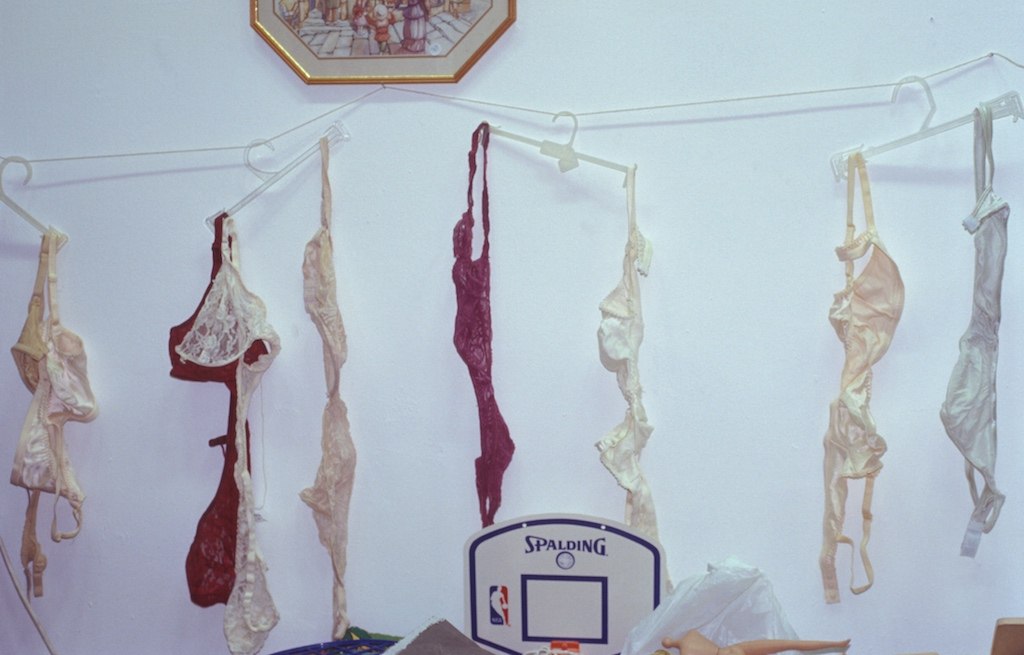
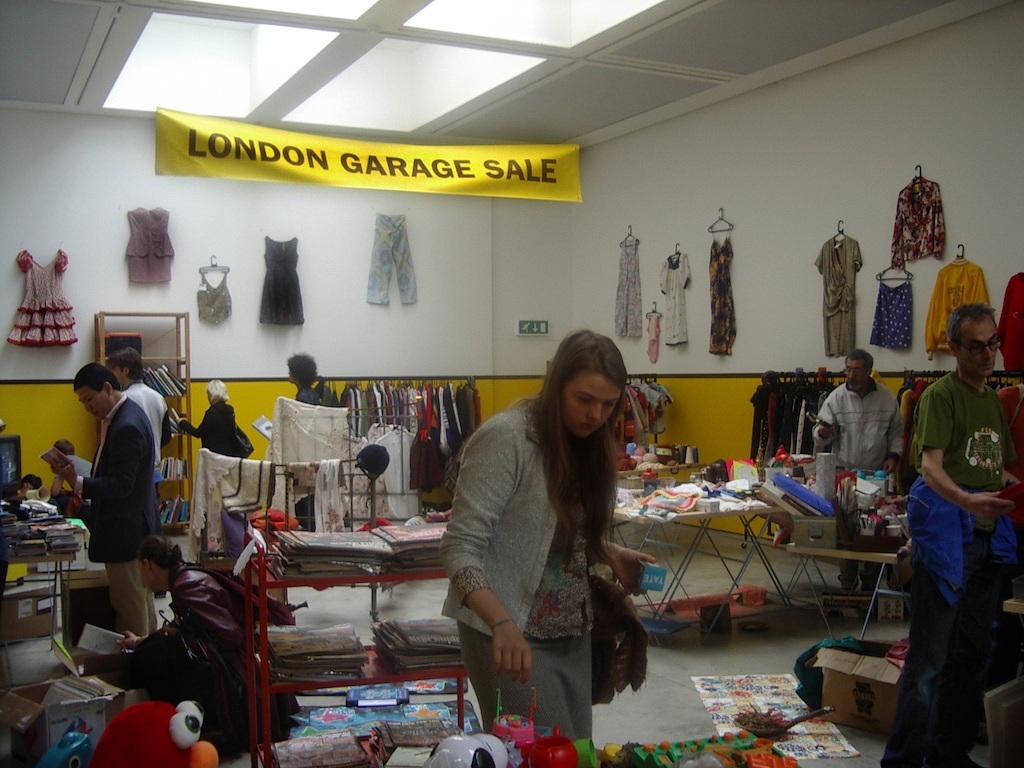
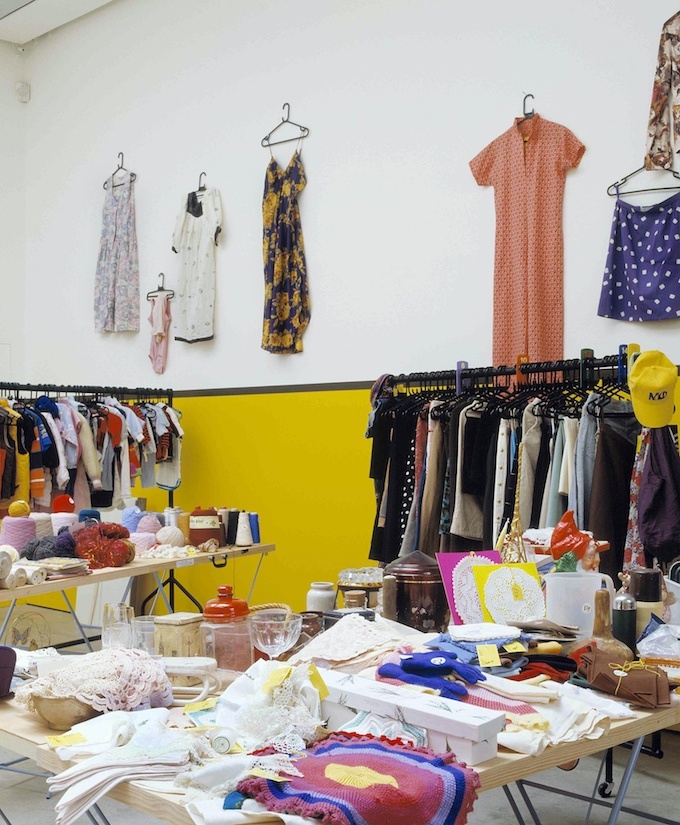
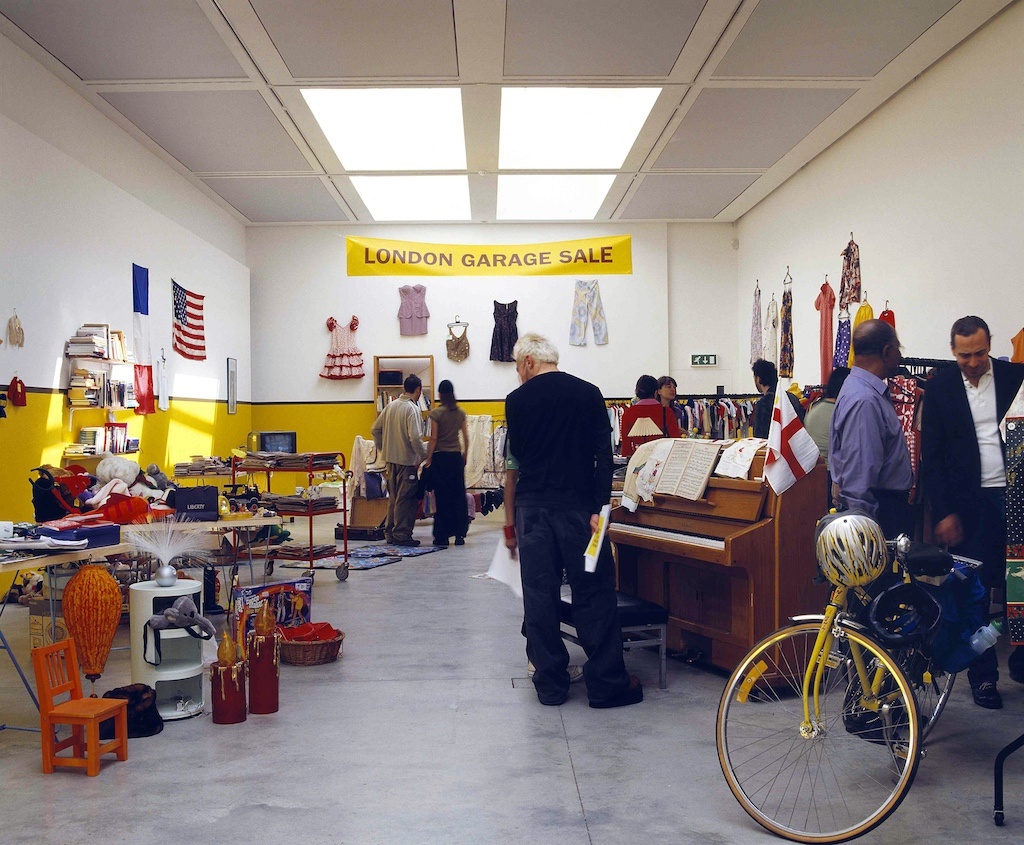
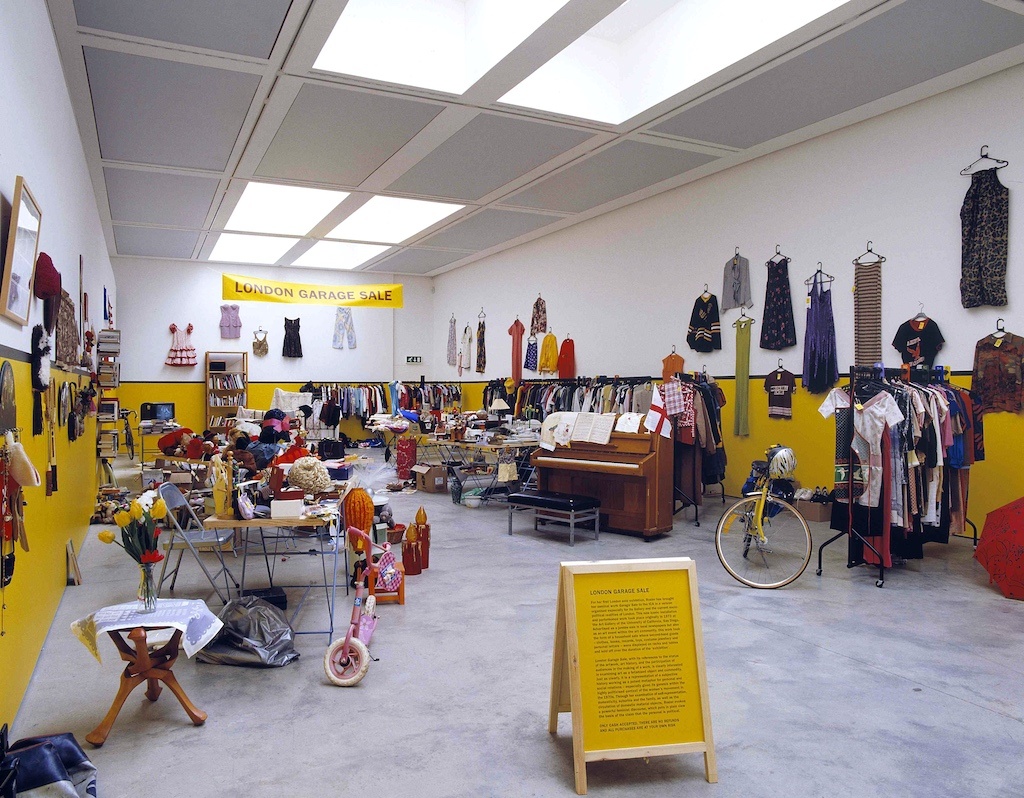
Kreisinger is waiting for the haggle to work in her favor or for the artist to speak to her directly for it to feel like she experienced a “social interaction in the museum.” She wants the time spent in the Sale to be a significant moment in which meaning is produced by the artist. Her comment also captures what I think was a widely experienced disappointment in the Sale’s ordinariness, its banality. People don’t actually go to MoMA to look at expensive things, they go to MoMA because they desire a transcendent form of value, and they did not find this kind of value in Rosler’s work. In fact, disappointment has always been one aspect of the project’s reception. Sandy Dijkstra, in a review of original Monumental Garage Sale in 1973, wrote:
Somehow Rosler’s ‘Garage Sale,’… fails. It is nothing more than the thing it is and although the intention may have been to represent life in Southern California, or America, any critical dimension seems to be blunted by an overwhelming sense of suffocation in what it was. It was a real garage sale.
- Rosler s Meta Monumental Garage Sale Standard, Issue 2, p. 14, available online: https://www.moma.org/interactives/exhibitions/ 2012/garagesale/garagesale2.pdf
… the informal exchanges of the garage sale, with their face-to-face relationships between buyer and seller (more often than not women), imply that economic activity mustn’t always be alienating. Rosler, not just a committed feminist but an unsparing critic of the logic of the art market, uses the garage sale as a counterbalance to more hierarchical economic relations: sometimes you’ll be taken for a sucker, but other times you’ll get a deal.
- Jason Farago, "Not Everything Must Go," The New Republic (December 5, 2012). See https://newrepublic.com/article/ 110741/matha-roslers-moma-garage-sale-and-art-economics
- Ibid.
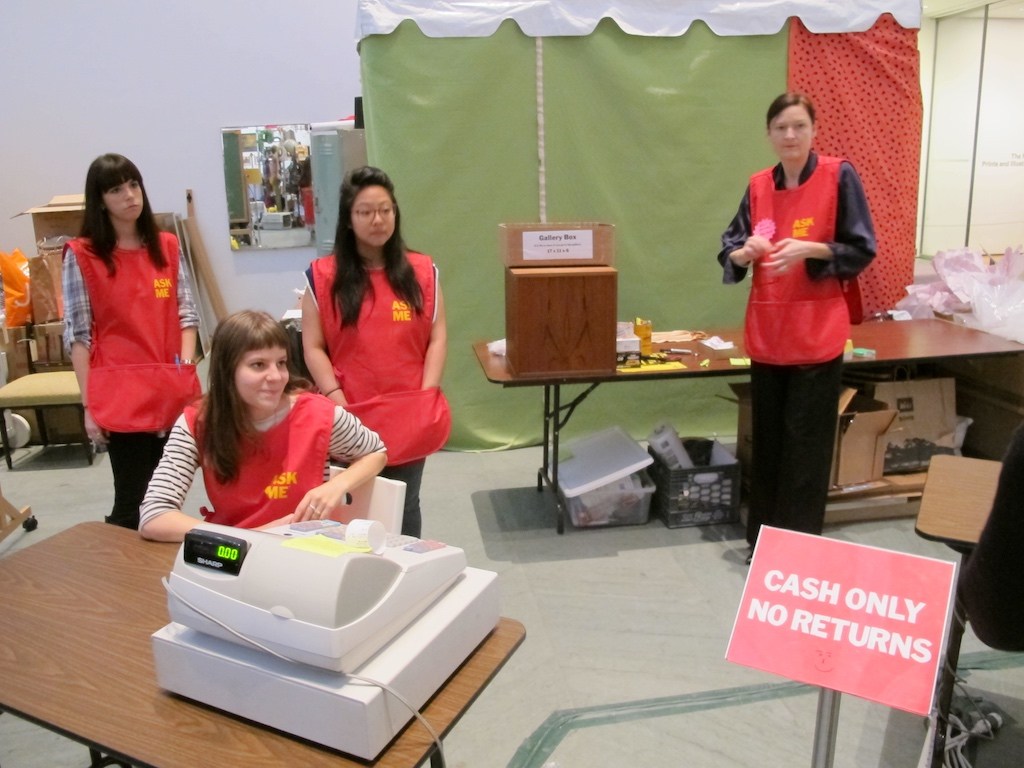
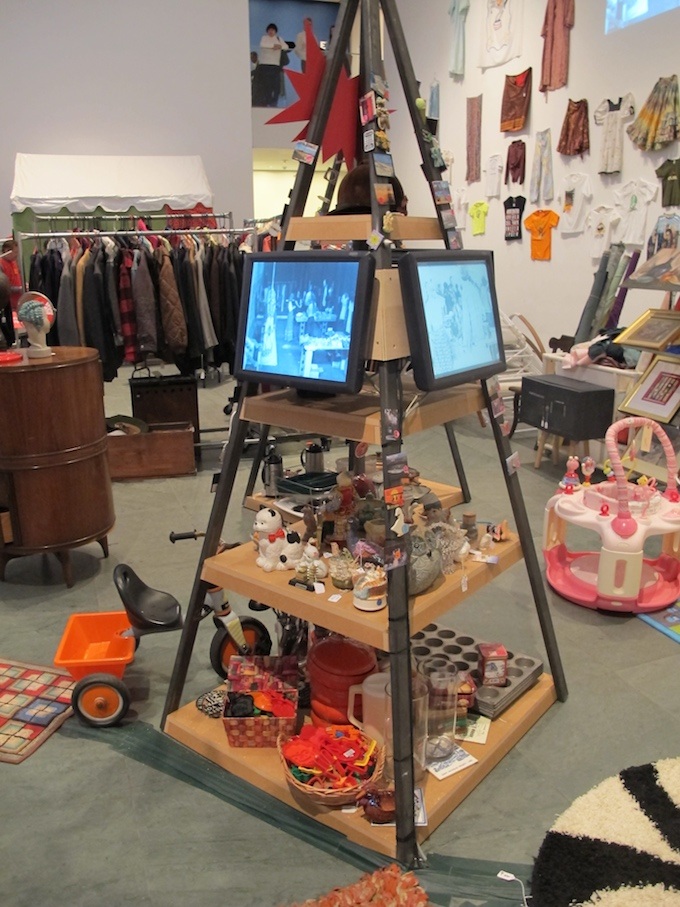
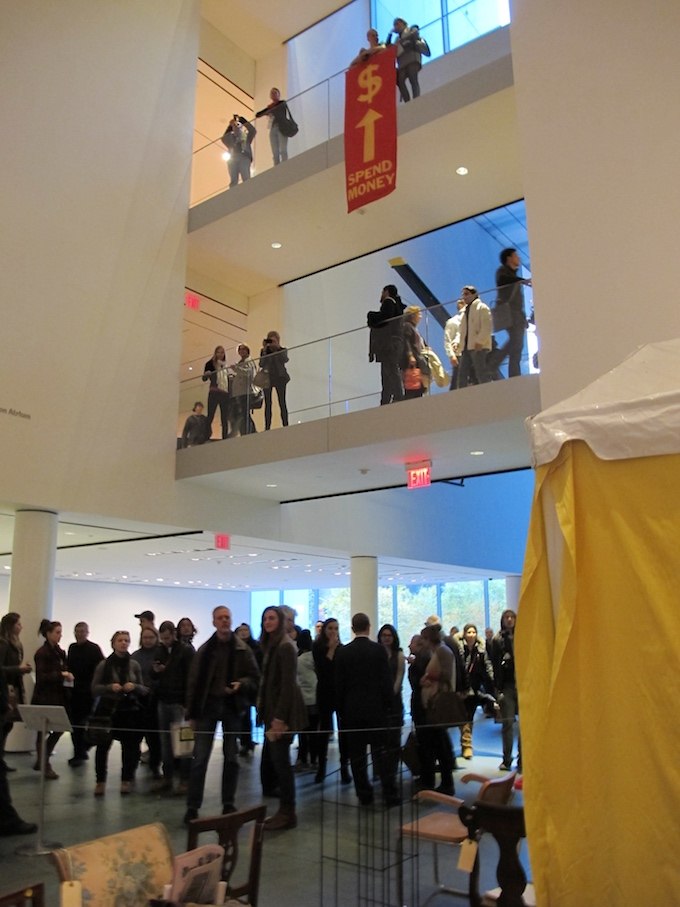
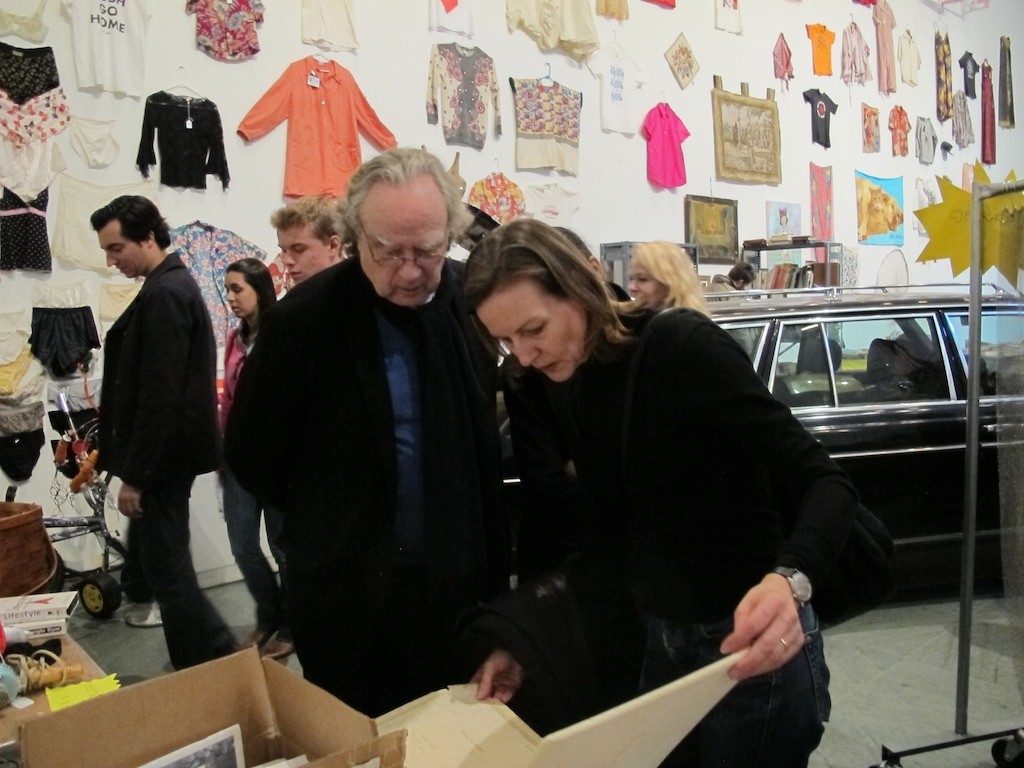
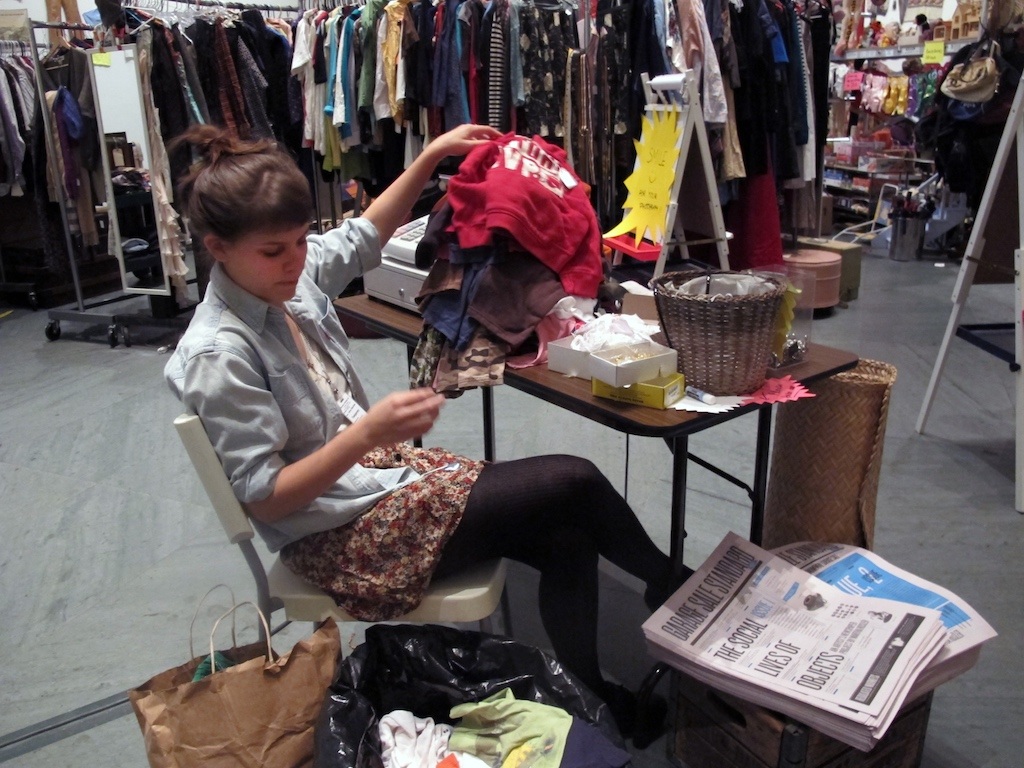
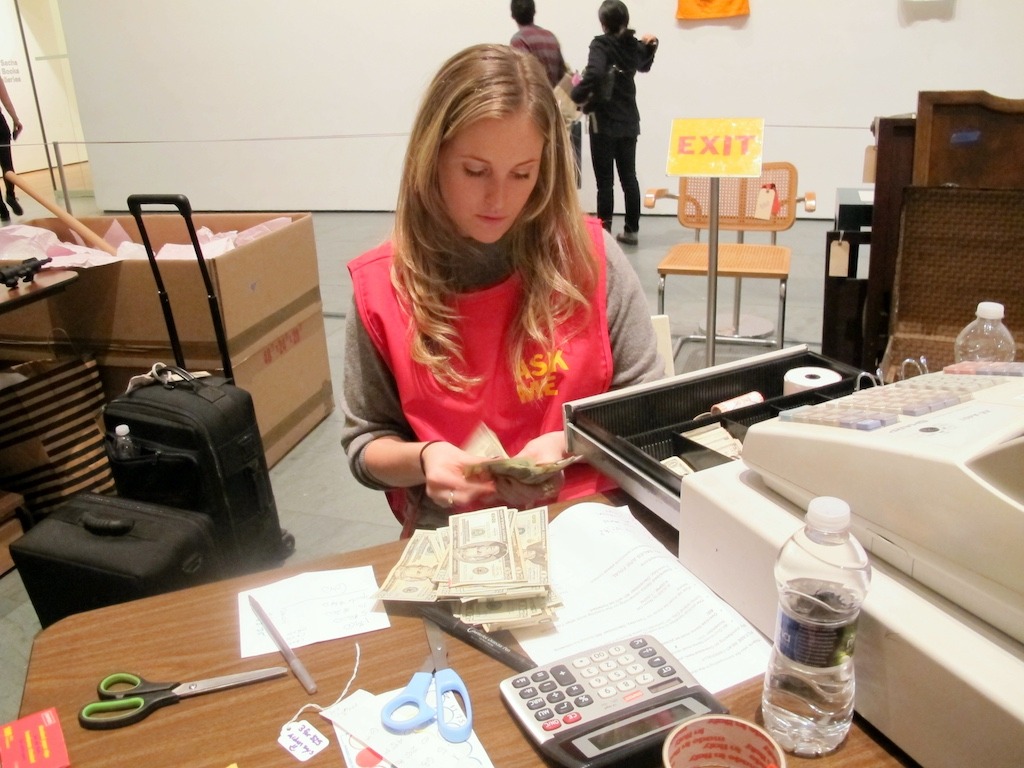
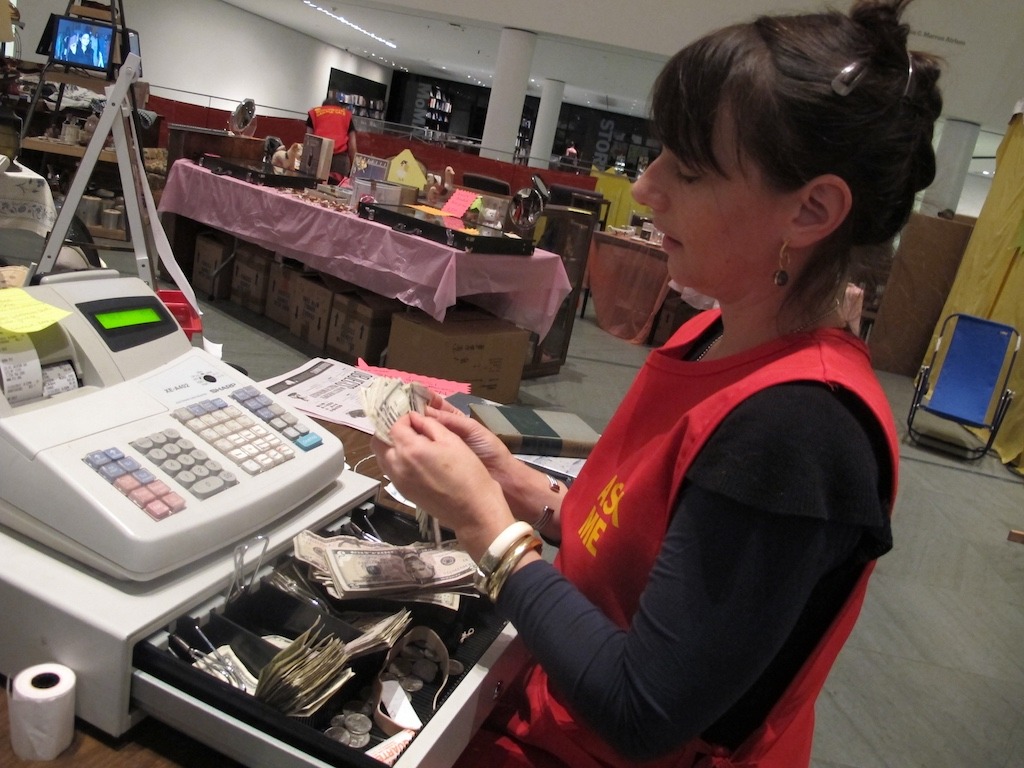
Farago suggests that MoMA’s complicity with capitalism hinges on the fact that it is a space reserved for the elite and their fancy-dress cocktail parties. I see MoMA’s role under capitalism as much more complex: art is useful to capitalism because it reifies the mechanism (an artwork) by which abstract value is produced, and MoMA is an epicenter of this phenomenon. In this context, MoMA functions as a device to amplify the lack-of-relation between ideas of value and the actual labor necessary to produce a given artwork. For example, there is no rational relationship between any given painter’s labor and material investment and the current day commercial value of any one of his paintings. The value of such an object is entirely established by the desire it provokes, a desire that is exponentially amplified through the painting’s association with MoMA. Rosler’s Sale acts like a mirror for MoMA’s role under capitalism, albeit a bitingly critical one, rather than as a feel-good patch for those nauseated by the experience of ordering their knick-knacks from Amazon or shopping in big-box stores.
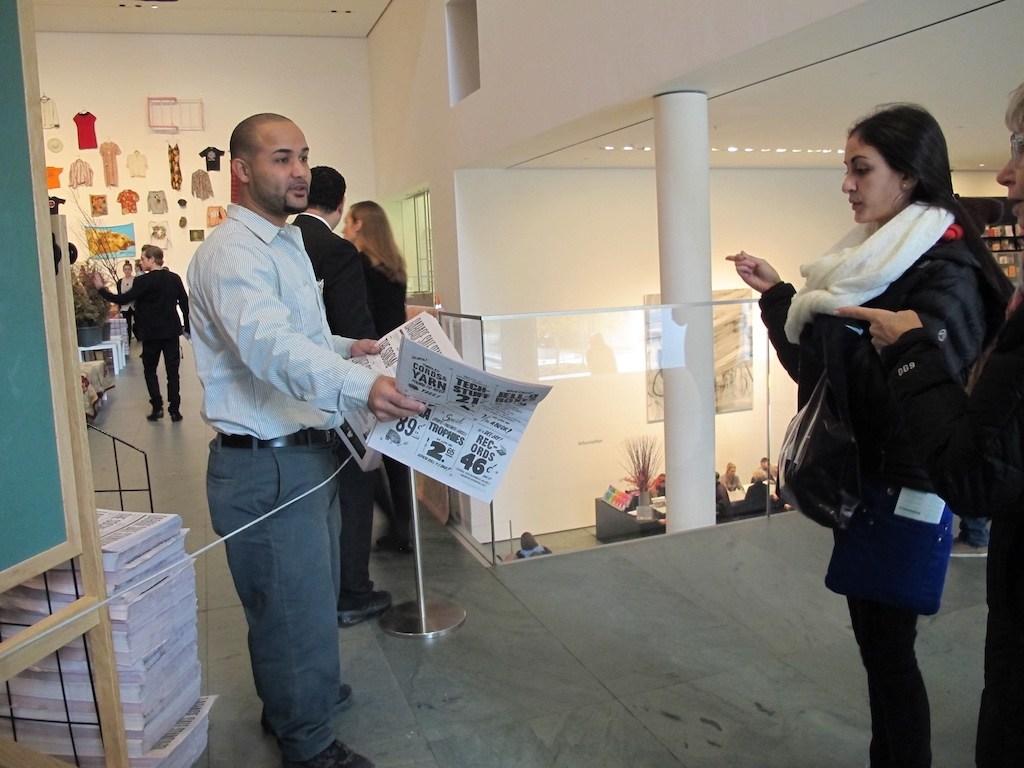
The Garage Sale Standard, a free newspaper edited by Sarah Resnick and Stephen Squibb included both critical writing commissioned to accompany the Sale and to contextualize it in a Marxist analysis of value, and normal small-newspaper fare like cartoons and a crossword puzzle. A purposely heavy-handedly discursive audio-track, the meditation on value described above, played on a continuous loop throughout the project. Contradictory linguistic signs and letters proliferated throughout the installation. Yet the critical reception that exists of The Meta-Monumental Garage Sale largely insists on the project's failure in emotional terms: "But this show, with its rows of dingy, over-priced secondhand goods and unwelcoming staff left me feeling anxious, isolated and poor," Kreisinger writes. "And so Rosler's Meta-Monumental Garage Sale, with its knick-knacks and hand-me-downs occupying the temple of modernism, feels woefully anticlimactic, even at this awesome scale," Farago laments. "Rosler's garage sale-through no fault of the artist's-has been diminished into just another form of feel-good consumption, complete with a museum-assigned hashtag so that you can show off your haul online," he concludes. 22
- Ibid.
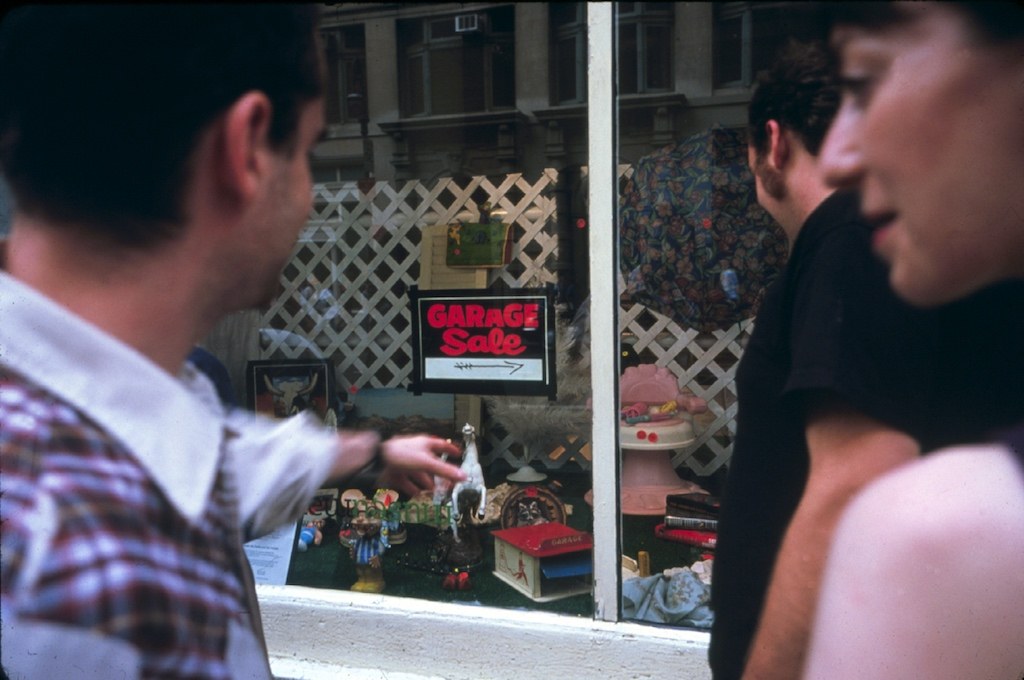
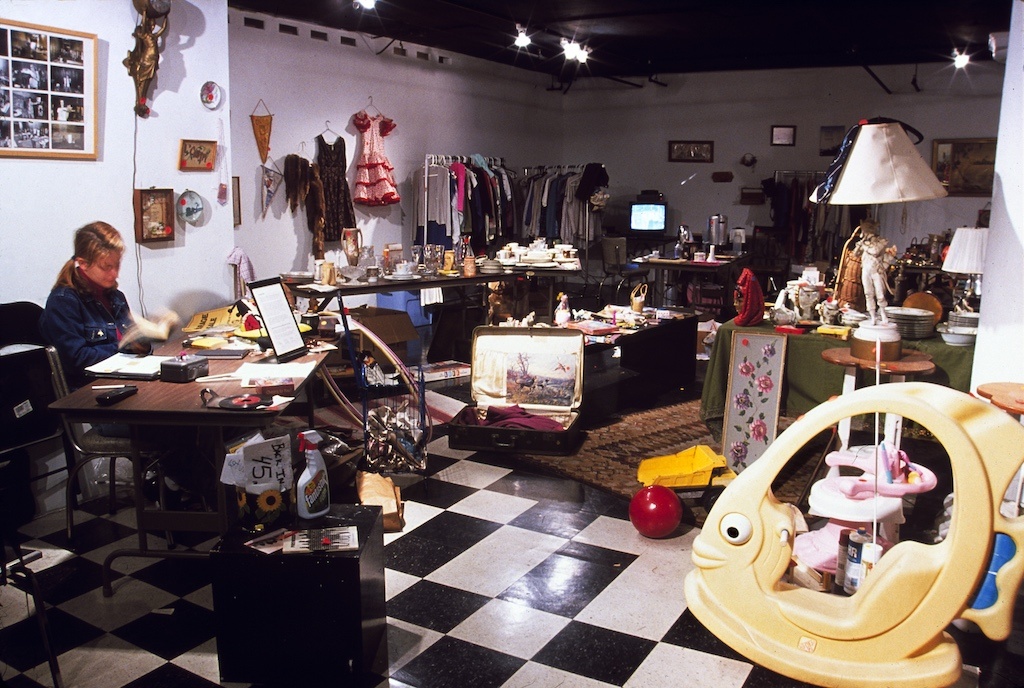
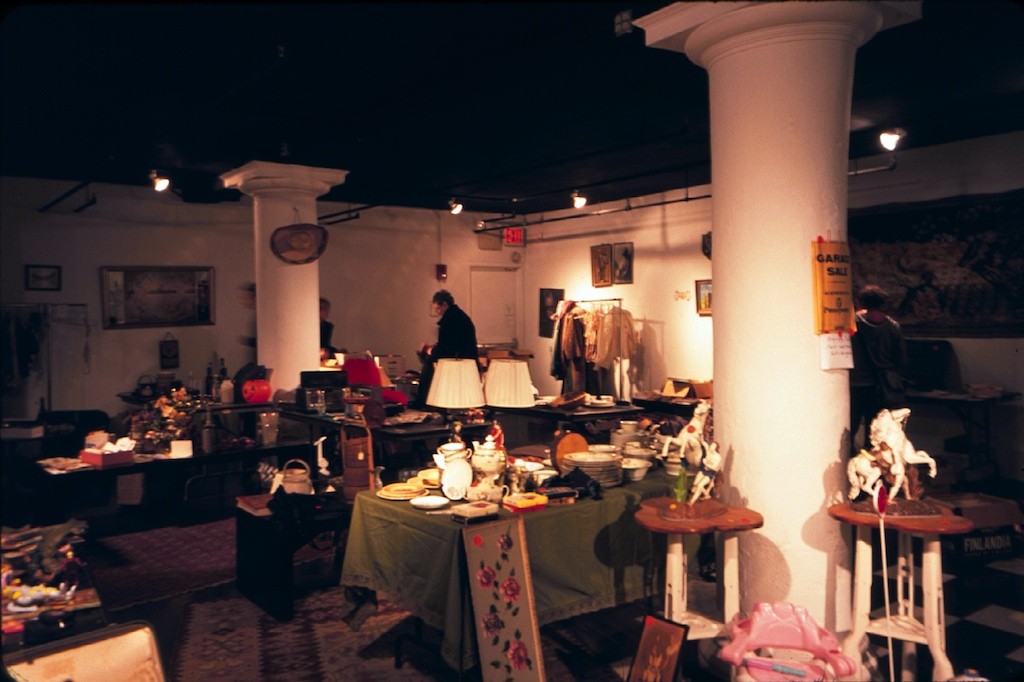



The Perfect Thing
Rosler's Meta-Monumental Garage Sale was not actually about producing a social relationship between Rosler and the people buying stuff from her, I think, no matter what the press release suggested. What was at stake in MoMA's version is what was always at stake for Rosler in this project, namely the representation of a gendered, informal economy in spaces otherwise devoted to the occlusion of gendered, informal labor. 23
- Dayna Tortorici s contribution to the Garage Sale Standard and her subsequent article in n+1 is an excellent feminist analysis of this project. I borrow my insight on this point from her. "More Smiles? More Money," n+1 issue 17 (Fall, 2013). See: https://nplusonemag.com/issue-17/reviews/more-smiles-more-money/
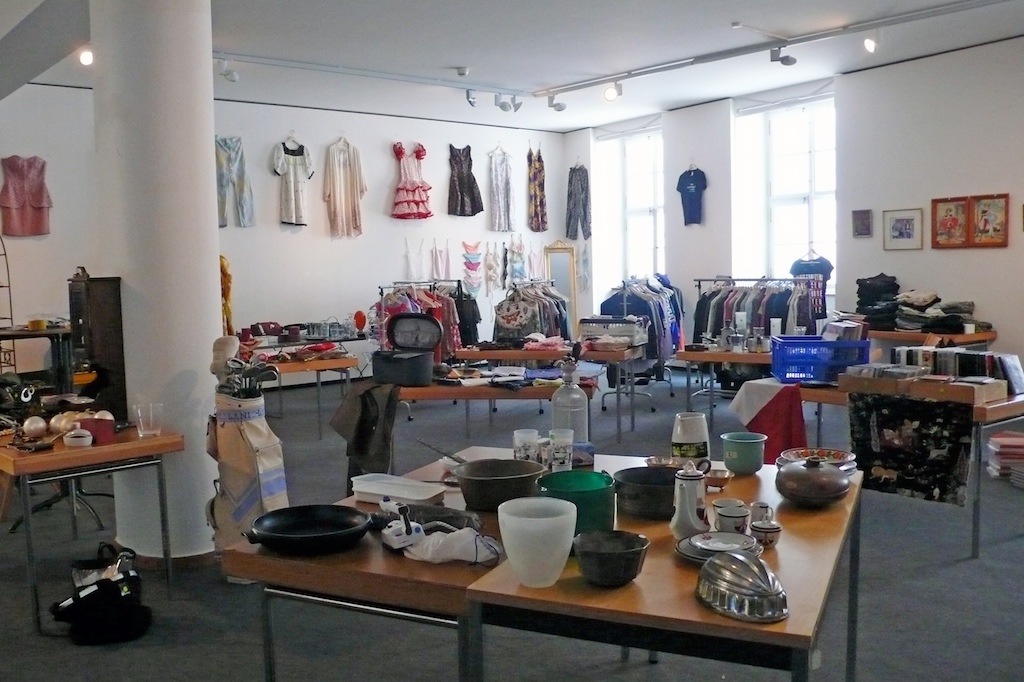

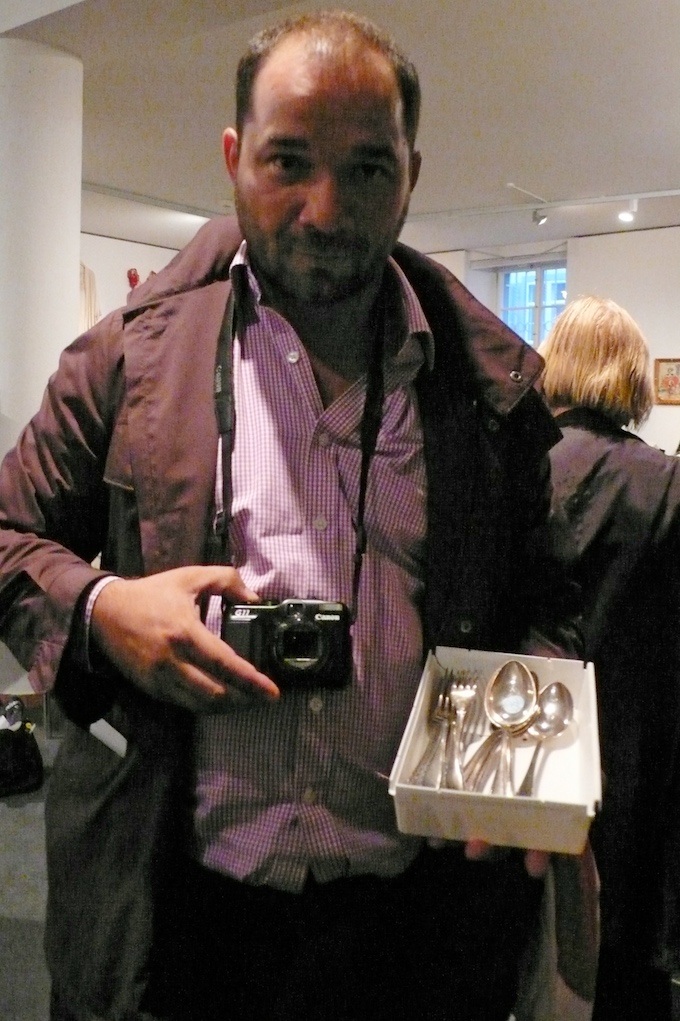
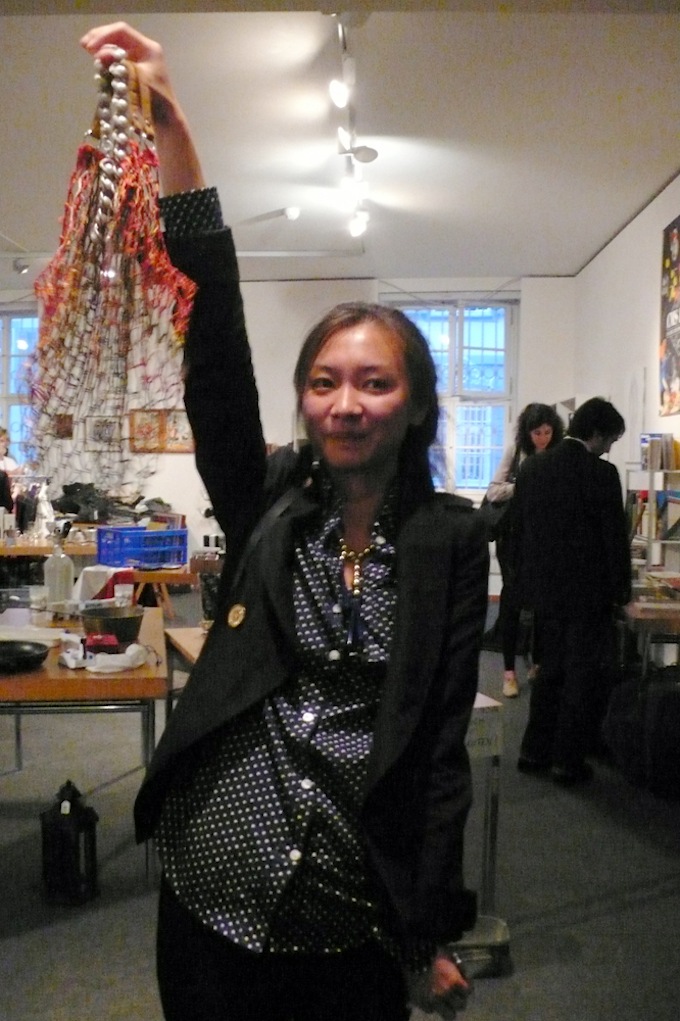
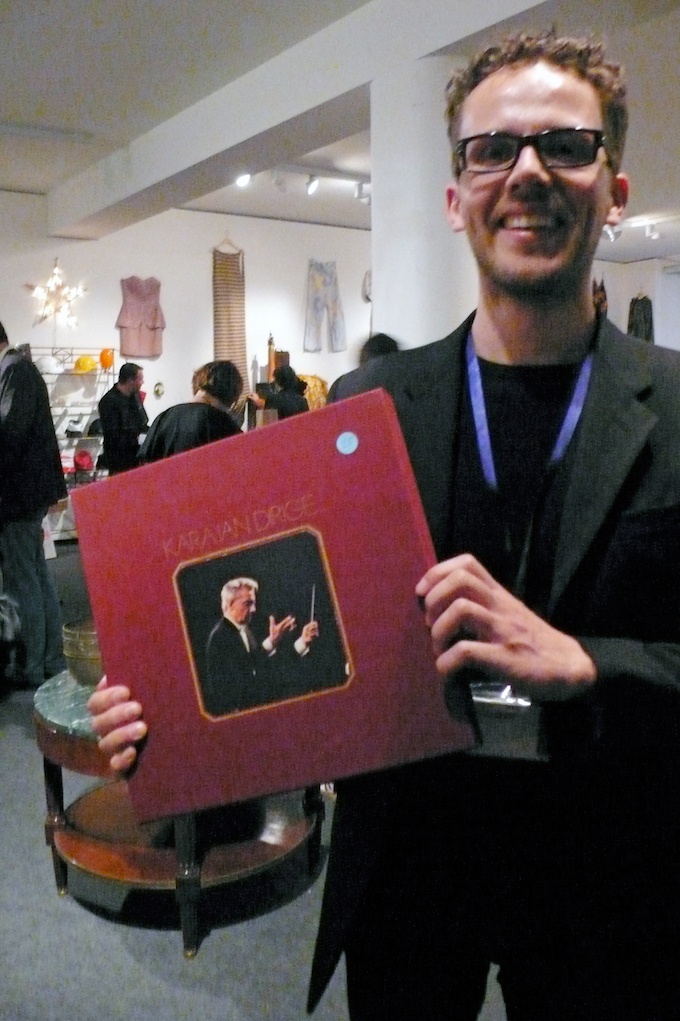
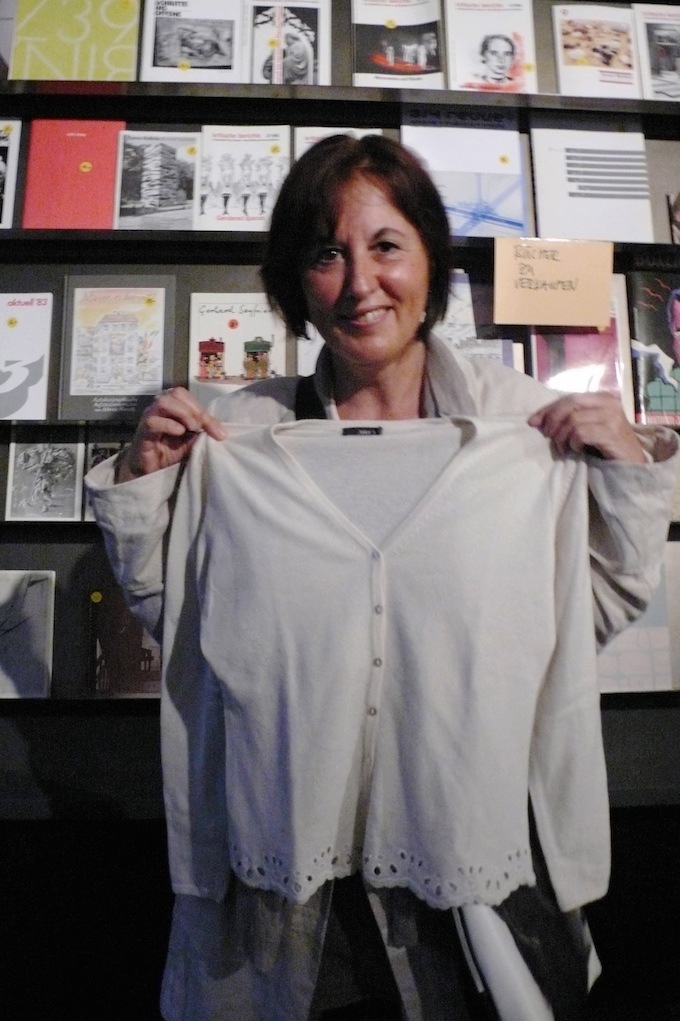
All photos courtesy of Martha Rosler.
Natasha Marie Llorens is an independent curator and writer based in New York and Marseille. Recent projects include YOU MOVE ME and CREATURELOVE at TWOFORTY in Brooklyn, and a curatorial residency at PRAKSIS in Oslo, “Meet Me at the Empty Center,” on the ethics of curating social practice art as an independent curator and as an artist practitioner. Llorens is currently adjunct faculty in the Master’s program in curatorial studies at Parsons Paris. She is a graduate of the Center for Curatorial Studies at Bard College and a Ph.D. candidate in art history at Columbia University. Her academic research is focused on violence and representation in Algerian national cinema from the period immediately post independence.


